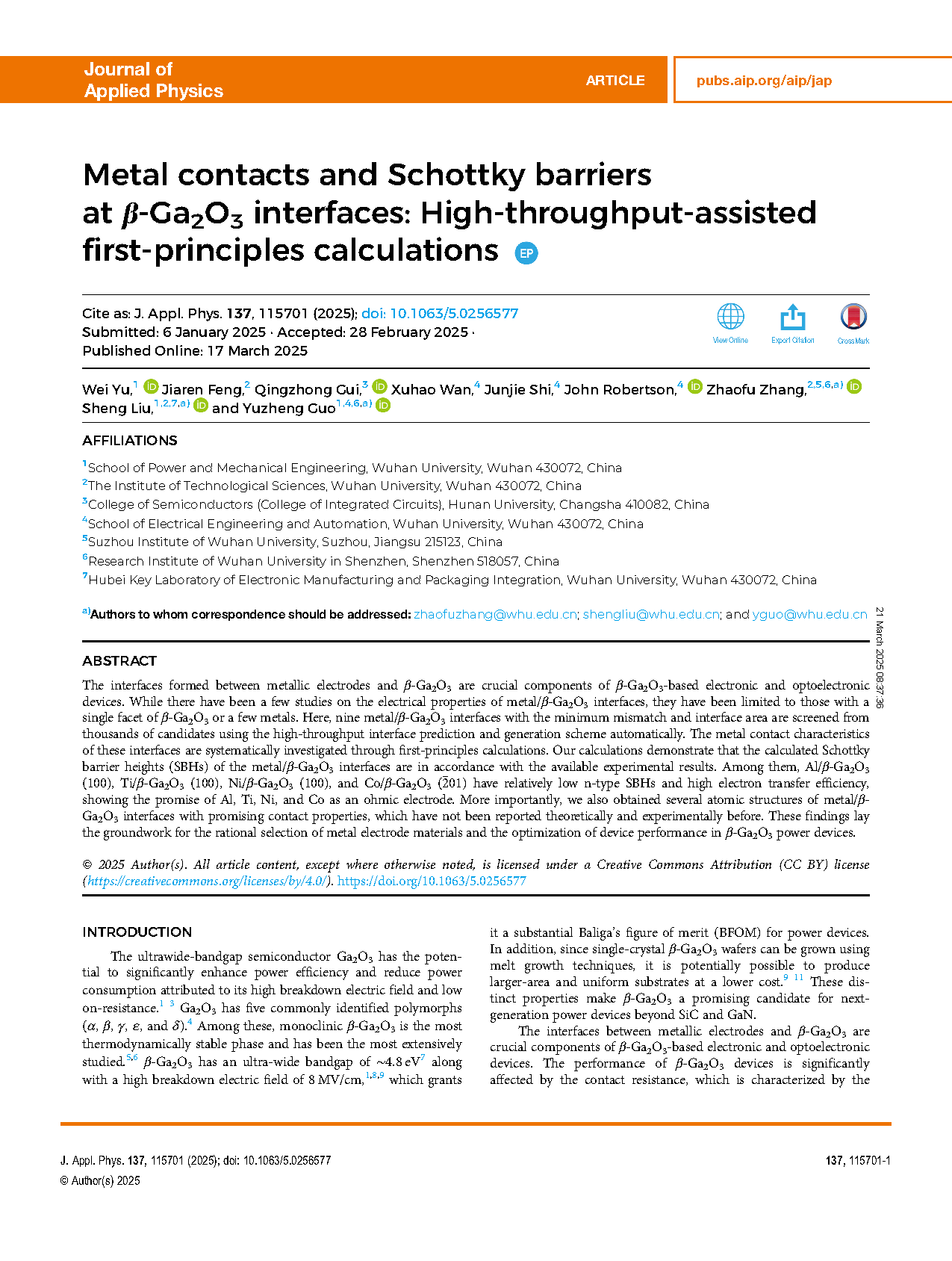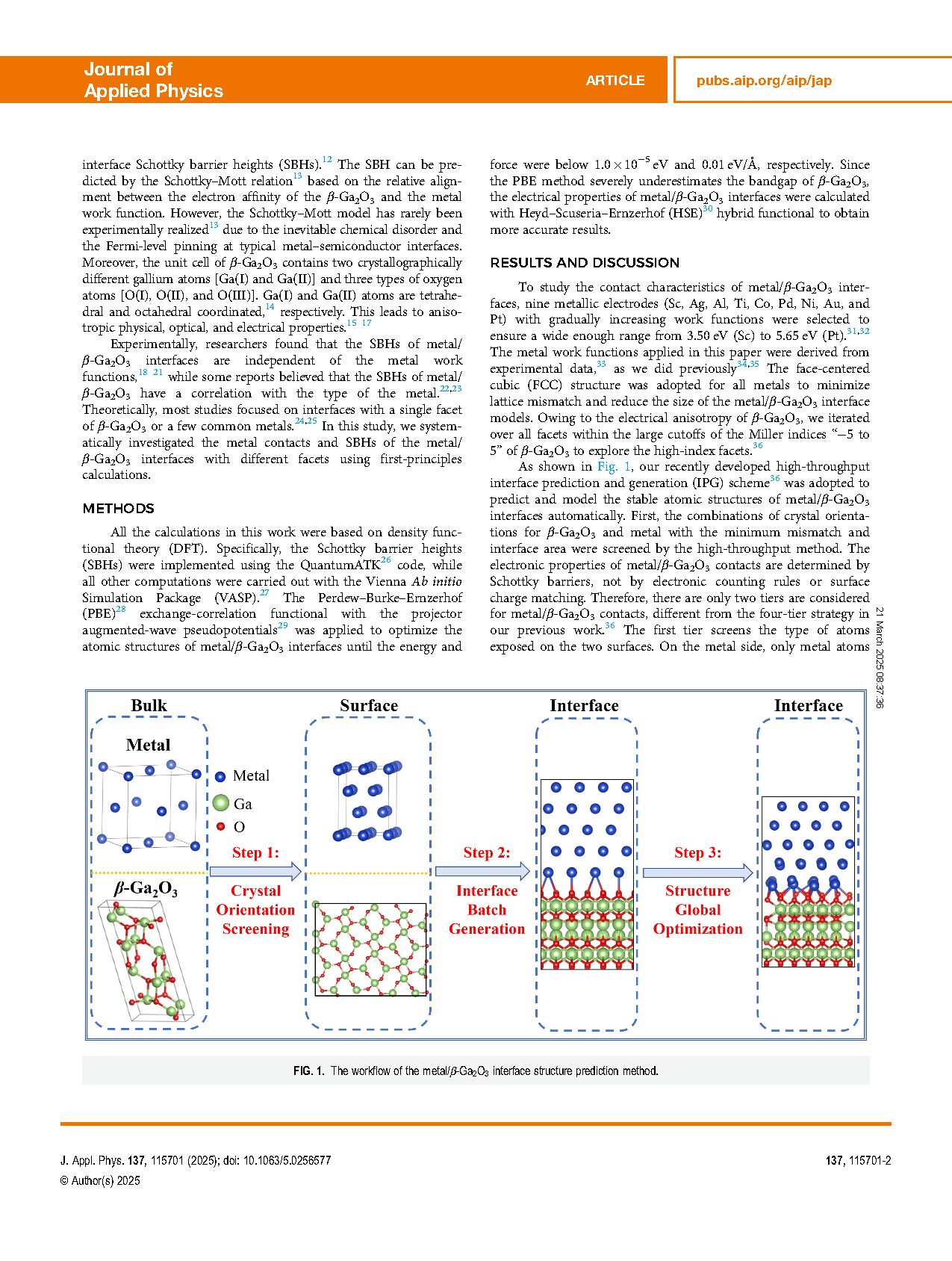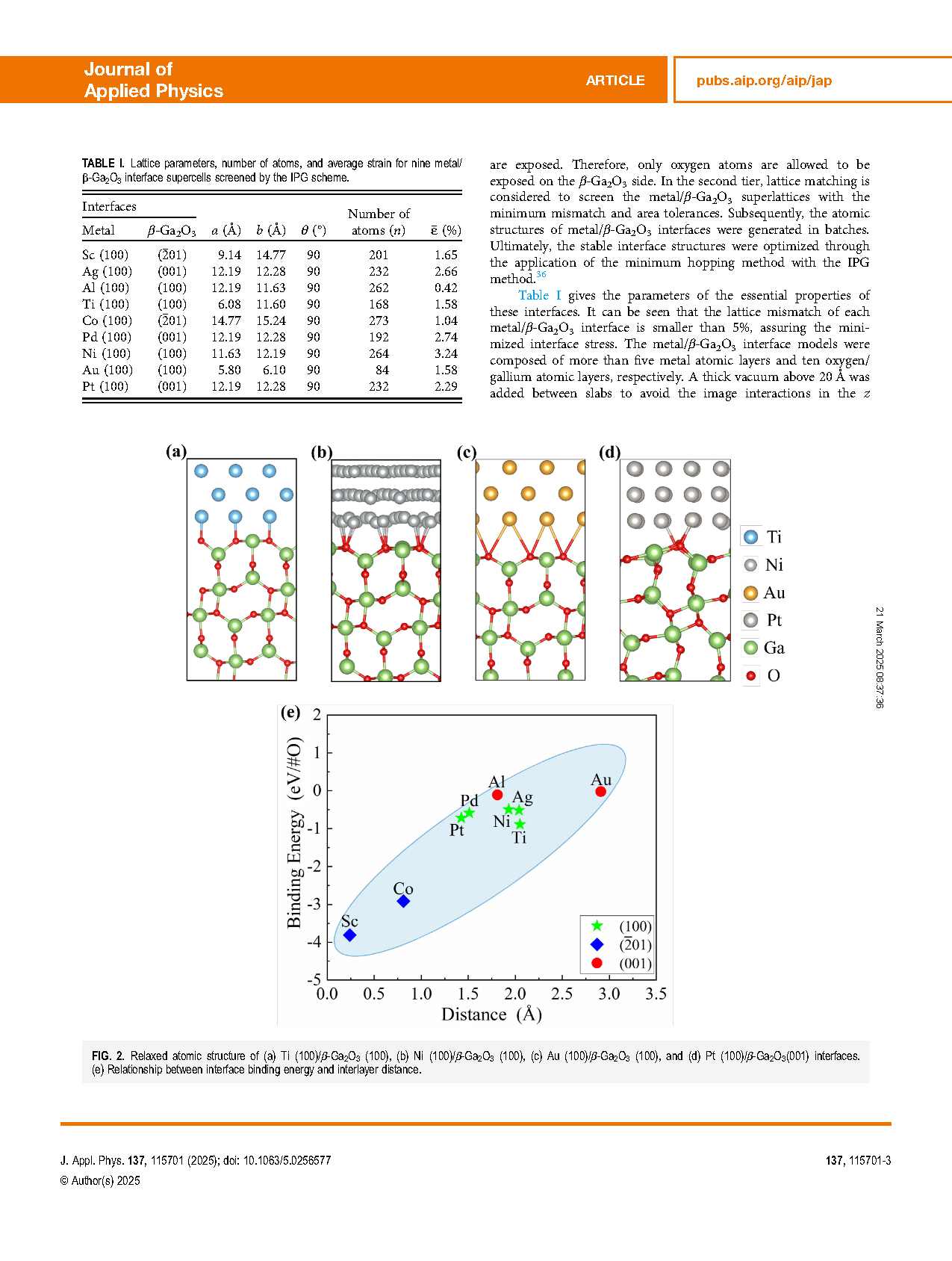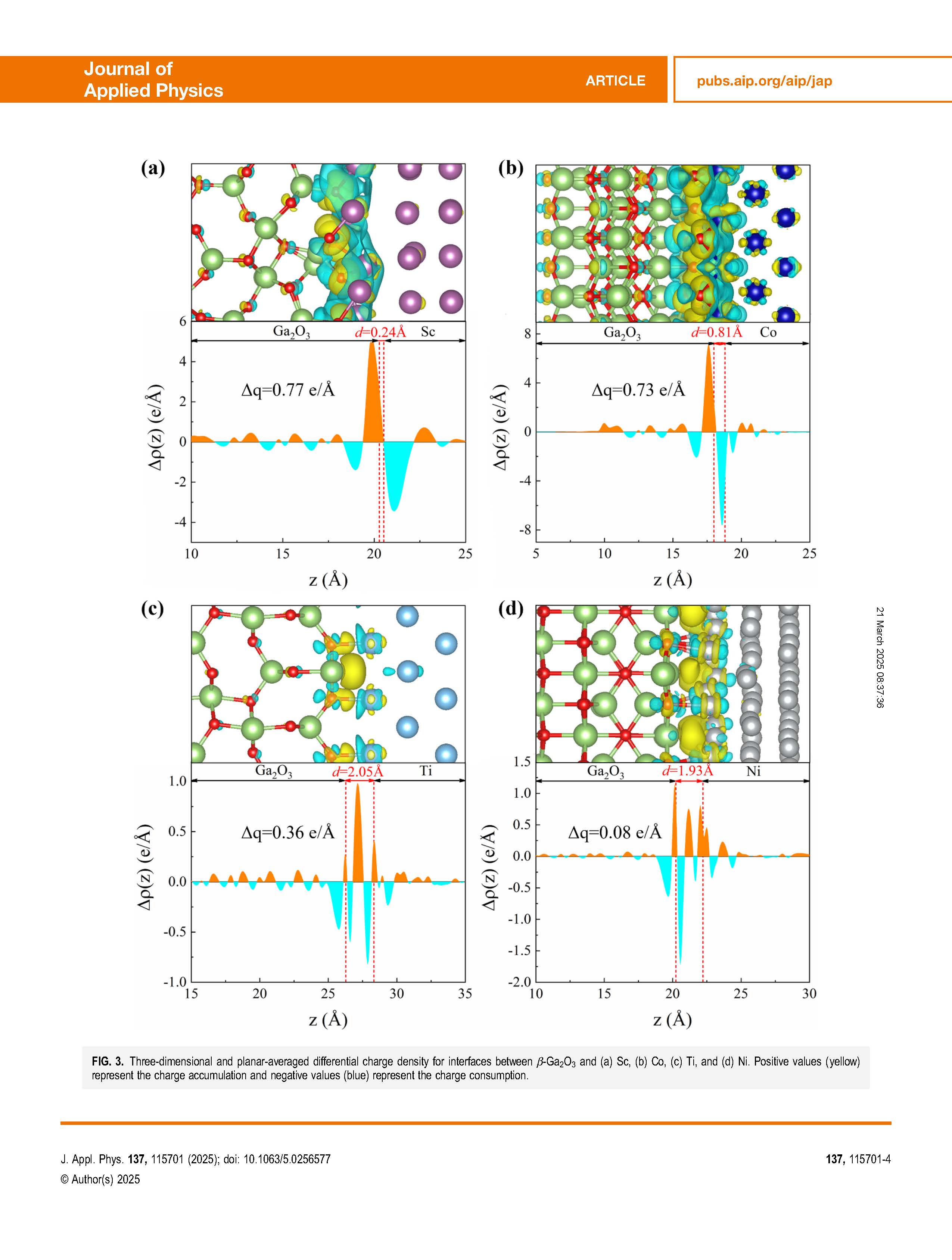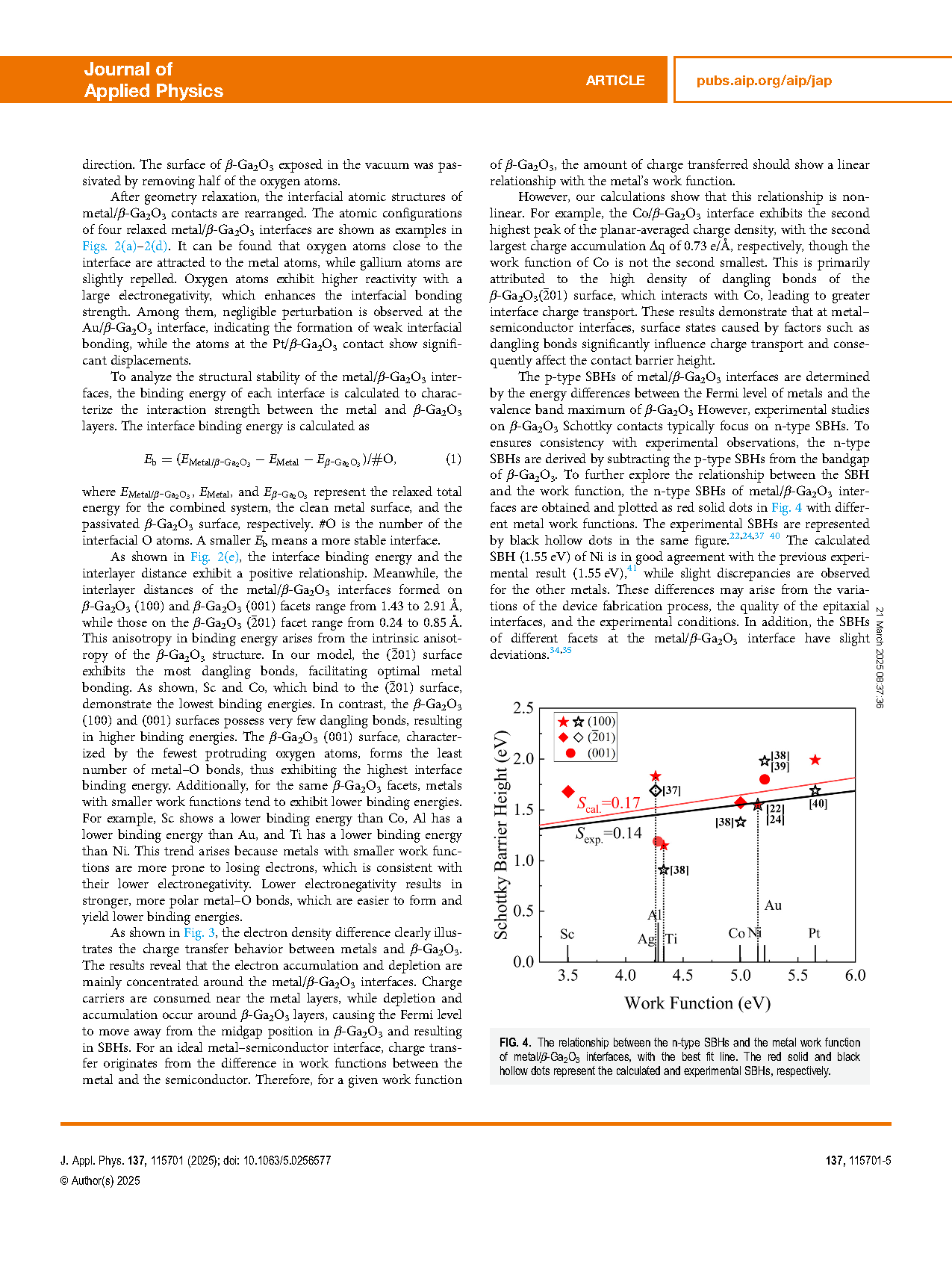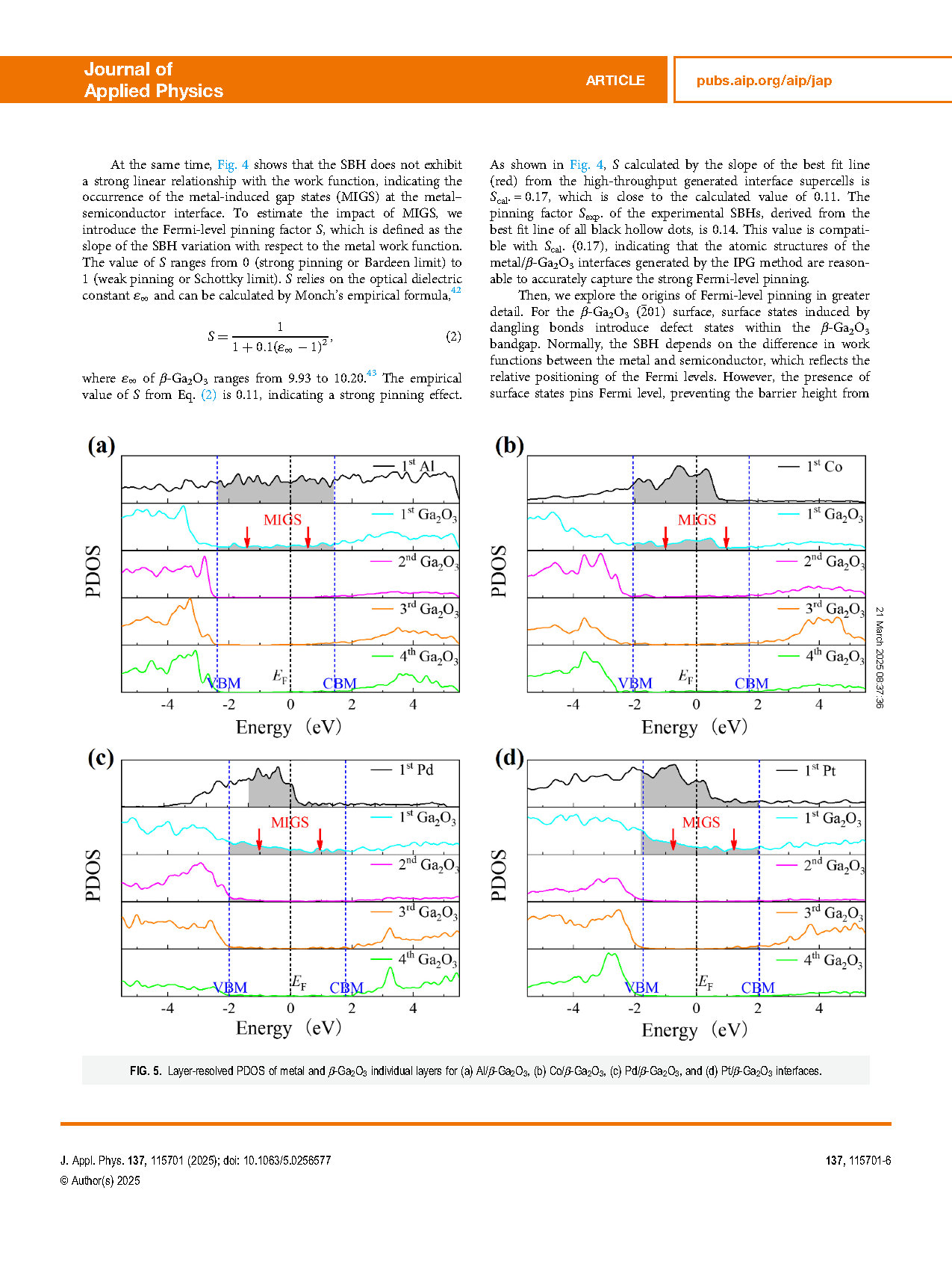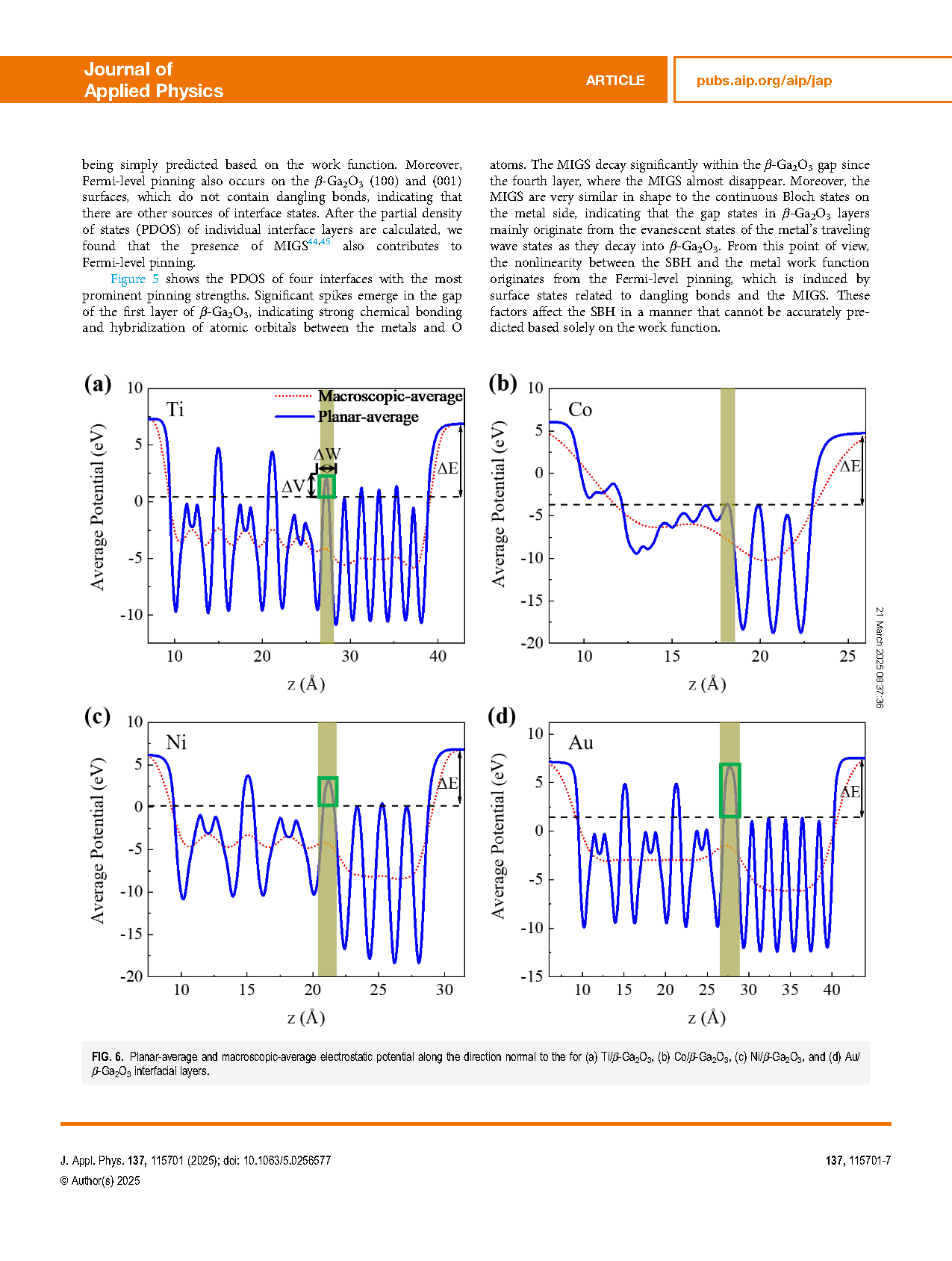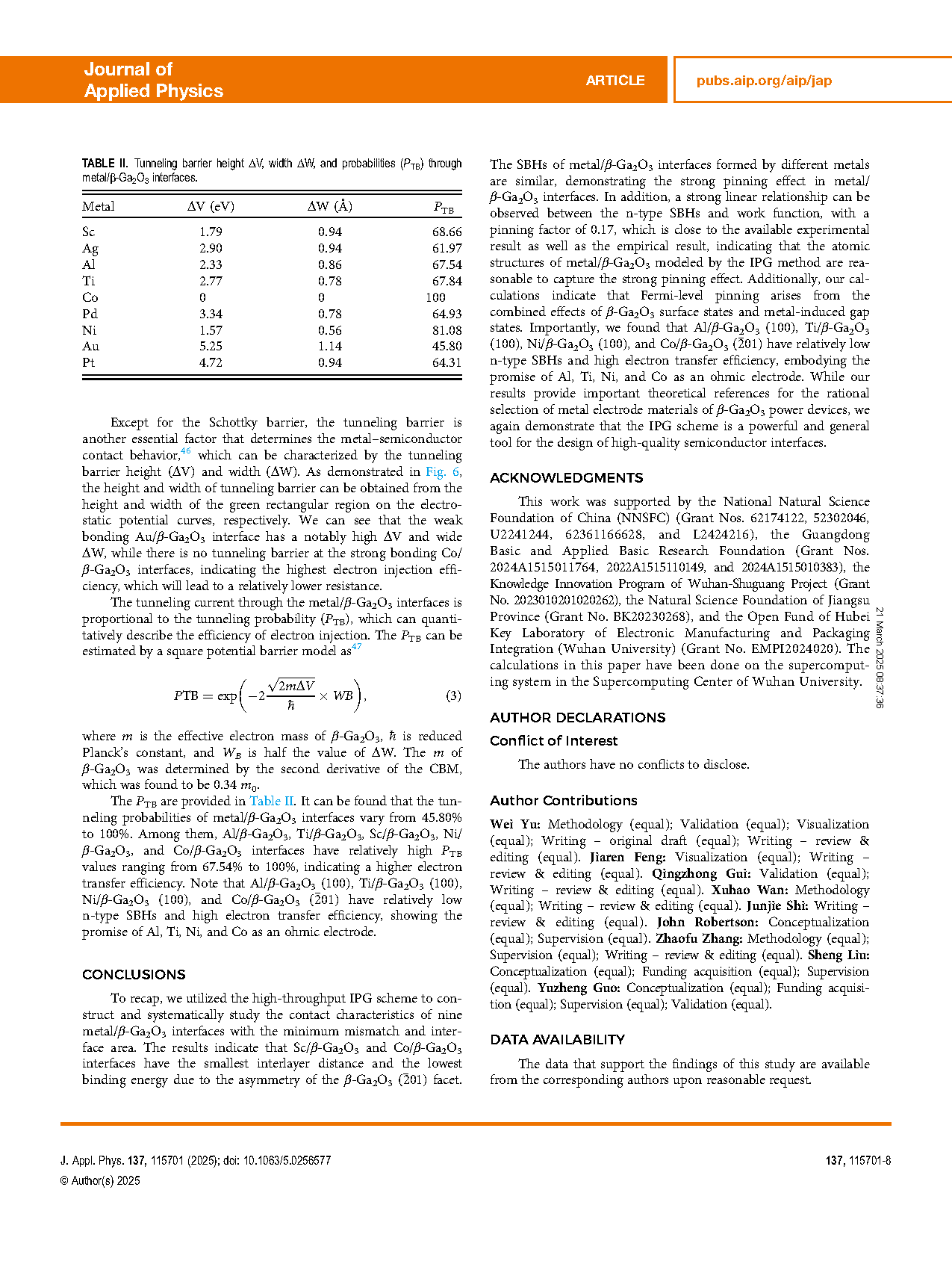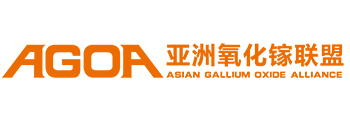

【Domestic Papers】Wuhan University --- Metal contacts and Schottky barriers at β-Ga₂O₃ interfaces: High-throughput-assisted first-principles calculations
日期:2025-03-27阅读:511
Researchers from the Wuhan University have published a dissertation titled "Metal contacts and Schottky barriers at β-Ga2O3 interfaces: High-throughput-assisted first-principles calculations" in Journal of Applied Physics.
Project Support
This work was supported by the National Natural Science Foundation of China (NNSFC) (Grant Nos. 62174122, 52302046, U2241244, 62361166628, and L2424216), the Guangdong Basic and Applied Basic Research Foundation (Grant Nos. 2024A1515011764, 2022A1515110149, and 2024A1515010383), the Knowledge Innovation Program of Wuhan-Shuguang Project (Grant No. 2023010201020262), the Natural Science Foundation of Jiangsu Province (Grant No. BK20230268), and the Open Fund of Hubei Key Laboratory of Electronic Manufacturing and Packaging Integration (Wuhan University) (Grant No. EMPI2024020). The calculations in this paper have been done on the supercomputing system in the Supercomputing Center of Wuhan University.
Background
The ultrawide-bandgap semiconductor Ga2O3 has the potential to significantly enhance power efficiency and reduce power consumption attributed to its high breakdown electric field and low on-resistance. Ga2O3 has five commonly identified polymorphs ( α, β, γ, ε, and δ). Among these, monoclinic β-Ga2O3 is the most thermodynamically stable phase and has been the most extensively studied. β-Ga2O3 has an ultra-wide bandgap of ∼4.8 eV along with a high breakdown electric field of 8 MV/cm, which grants it a substantial Baliga’s figure of merit (BFOM) for power devices. In addition, since single-crystal β-Ga2O3 wafers can be grown using melt growth techniques, it is potentially possible to produce larger-area and uniform substrates at a lower cost. These distinct properties make β-Ga2O3 a promising candidate for next-generation power devices beyond SiC and GaN.
Abstract
The interfaces formed between metallic electrodes and β-Ga2O3 are crucial components of β-Ga2O3-based electronic and optoelectronic devices. While there have been a few studies on the electrical properties of metal/β-Ga2O3 interfaces, they have been limited to those with a single facet of β-Ga2O3 or a few metals. Here, nine metal/β-Ga2O3 interfaces with the minimum mismatch and interface area are screened from thousands of candidates using the high-throughput interface prediction and generation scheme automatically. The metal contact characteristics of these interfaces are systematically investigated through first-principles calculations. Our calculations demonstrate that the calculated Schottky barrier heights (SBHs) of the metal/β-Ga2O3 interfaces are in accordance with the available experimental results. Among them, Al/β-Ga2O3 (100), Ti/β-Ga2O3 (100), Ni/β-Ga2O3 (100), and Co/β-Ga2O3 () have relatively low n-type SBHs and high electron transfer efficiency, showing the promise of Al, Ti, Ni, and Co as an ohmic electrode. More importantly, we also obtained several atomic structures of metal/β-Ga2O3 interfaces with promising contact properties, which have not been reported theoretically and experimentally before. These findings lay the groundwork for the rational selection of metal electrode materials and the optimization of device performance in β-Ga2O3 power devices.
Conclusion
To recap, we utilized the high-throughput IPG scheme to construct and systematically study the contact characteristics of nine metal/β-Ga2O3 interfaces with the minimum mismatch and interface area. The results indicate that Sc/β-Ga2O3 and Co/β-Ga2O3 interfaces have the smallest interlayer distance and the lowest binding energy due to the asymmetry of the β-Ga2O3 (-201) facet. The SBHs of metal/β-Ga2O3 interfaces formed by different metals are similar, demonstrating the strong pinning effect in metal/β-Ga2O3 interfaces. In addition, a strong linear relationship can be observed between the n-type SBHs and work function, with a pinning factor of 0.17, which is close to the available experimental result as well as the empirical result, indicating that the atomic structures of metal/β-Ga2O3 modeled by the IPG method are reasonable to capture the strong pinning effect. Additionally, our calculations indicate that Fermi-level pinning arises from the combined effects of β-Ga2O3 surface states and metal-induced gap states. Importantly, we found that Al/β-Ga2O3 (100), Ti/β-Ga2O3 (100), Ni/β-Ga2O3 (100), and Co/β-Ga2O3 (-201) have relatively low n-type SBHs and high electron transfer efficiency, embodying the promise of Al, Ti, Ni, and Co as an ohmic electrode. While our results provide important theoretical references for the rational selection of metal electrode materials of β-Ga2O3 power devices, we again demonstrate that the IPG scheme is a powerful and general tool for the design of high-quality semiconductor interfaces.
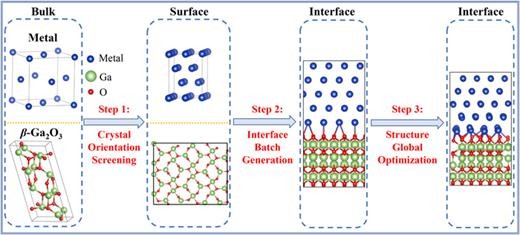
FIG. 1. The workflow of the metal/β-Ga2O3 interface structure prediction method.
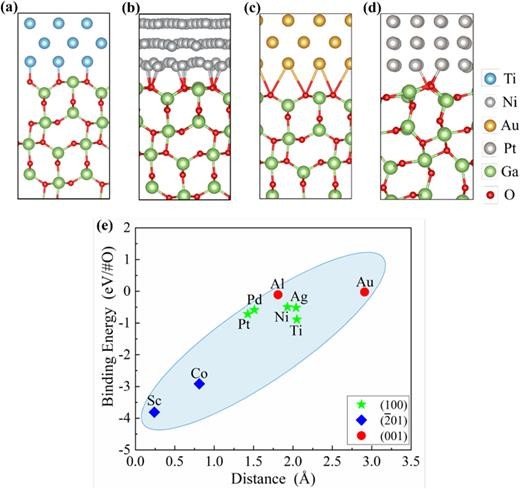
FIG. 2. Relaxed atomic structure of (a) Ti (100)/β-Ga2O3 (100), (b) Ni (100)/β-Ga2O3 (100), (c) Au (100)/β-Ga2O3 (100), and (d) Pt (100)/β-Ga2O3(001) interfaces. (e) Relationship between interface binding energy and interlayer distance.
DOI:
doi.org/10.1063/5.0256577
